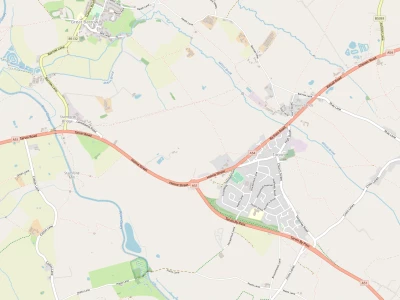COW PARSLEY (Anthriscus sylvestris)
Knowing the name of Cow Parsley probably sells very short this delightful flower that decorates roadsides, hedgerows and the edges of our woodland with umbrella-like clusters (properly referred to as Umbels) of white, frothy flowers in May and early June. It is a tall and hollow-stemmed member of the Carrot family (to which grouping Parsley also belongs) and it grows rapidly in shady habitats early in the summer, before dying back once it is faced with stronger competition. Perhaps even more distinctive (if less eye-catching) than the flowers are the large, lacy, fern-like leaves, which may have given rise to one of the plant's alternative (and much more attractive) names, "Queen Anne's Lace". The rather dismissive English name, Cow Parsley, simply implies an inferior version of real parsley. You may consider this to be an appropriate name for this truly rural blossom but I think it a shame that the name Queen Anne's lace has never really caught on. In some places, the plant is also known as "wild chervil".
By the calendar alone Cow Parsley is one of the easier members of the "umbellifer" family to identify, because it comes into flower before any of the other familiar members of this group of wildflowers – flowers which may all look to be very 'much of a muchness' – from wild carrot and wild parsnip through fennel, wild angelica and ground elder and on to hemlock, hogweed and the dreaded giant hogweed. When crushed between the fingers, the leaves produce a strong, aniseed-like scent. It may be for this reason that it has always been used as mosquito repellent. Cow parsley was used in many traditional medicines and is said to help treat various ailments, such as stomach and kidney problems, breathing difficulties and colds.
It is also attractive to a huge number of creatures, from orange-tip butterflies to marmalade hoverflies, and even rabbits (which, fortunately, we do not currently have in the woodland). It is also proving increasingly attractive to flower arrangers, as it is developing a rising reputation for being a useful decorative flower; widely used in church arrangements on account of its sprays working well in a vase and the shape and blossom lasting over a week. However, before going out to collect Cow Parsley flowers later on during its season, please check that you can differentiate it from the somewhat similar hemlock (which is very poisonous) and hogweed (whose sap will cause burns on skin in sunlight).
Properly identified, young Cow Parsley leaves are said to be a fresh and mildly aromatic addition to omelettes and salads. However, another of its common names "Mother die" (implying that your mother will die if you pick the plant) is perhaps a useful reminder to discourage the picking of any of the umbellifer family since the edible and toxic species are so similar-looking. Caution is definitely the order of the day! However, viewed from a distance, the clouds of delicate white blossoms above the gentle, fern-like leaves are beautiful and, in the calendar of our wild flowers, Cow Parsley takes its place amongst the lovely cycle of wild flowers that can be seen on walks through Tarvin Woodland.
Quick Links
Get In Touch
TarvinOnline is powered by our active community.
Please send us your news and views.








